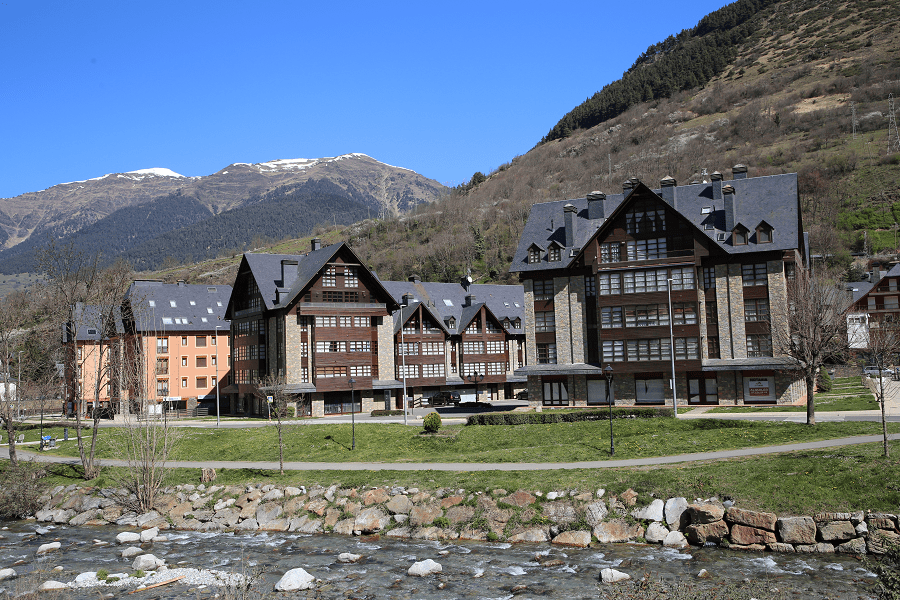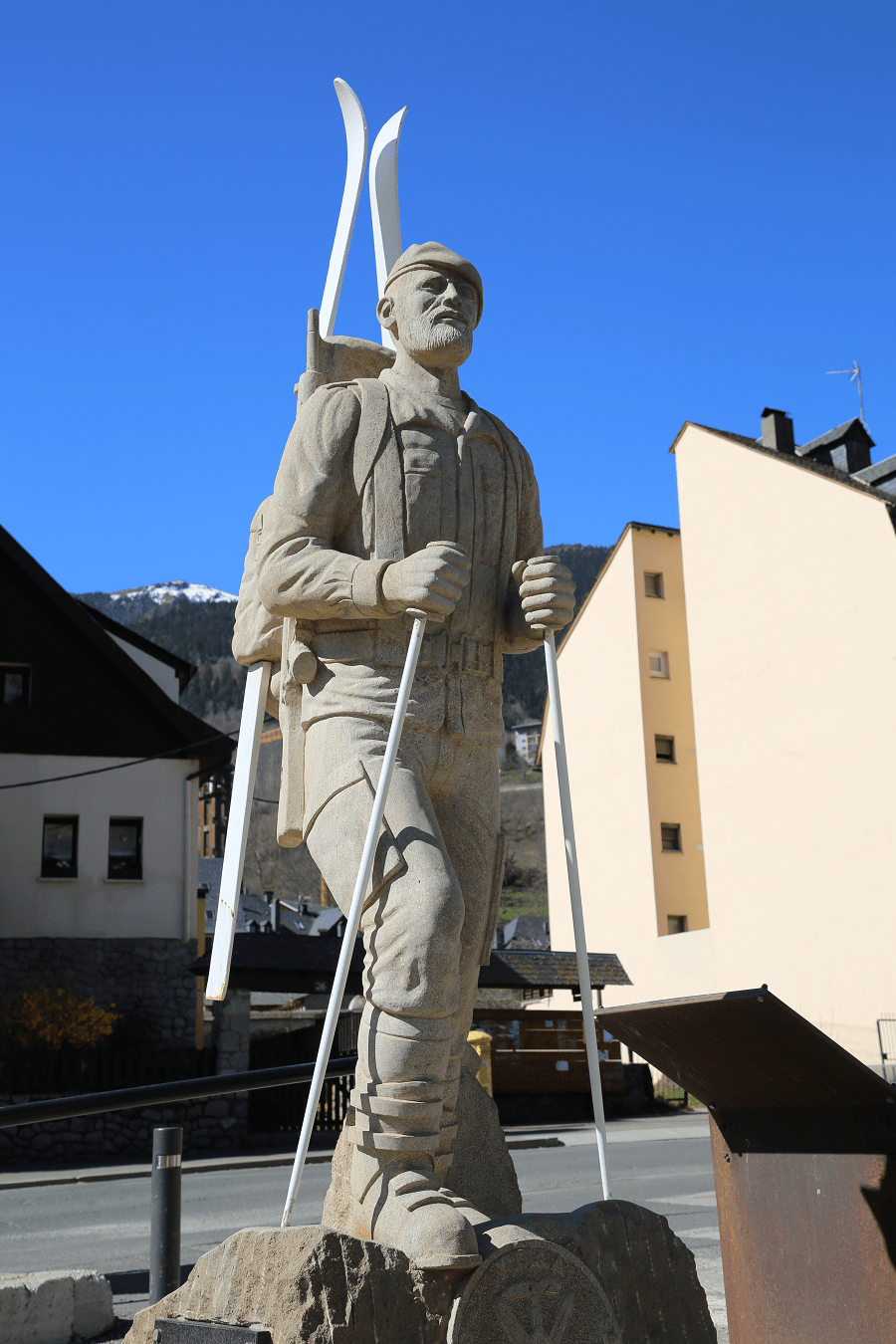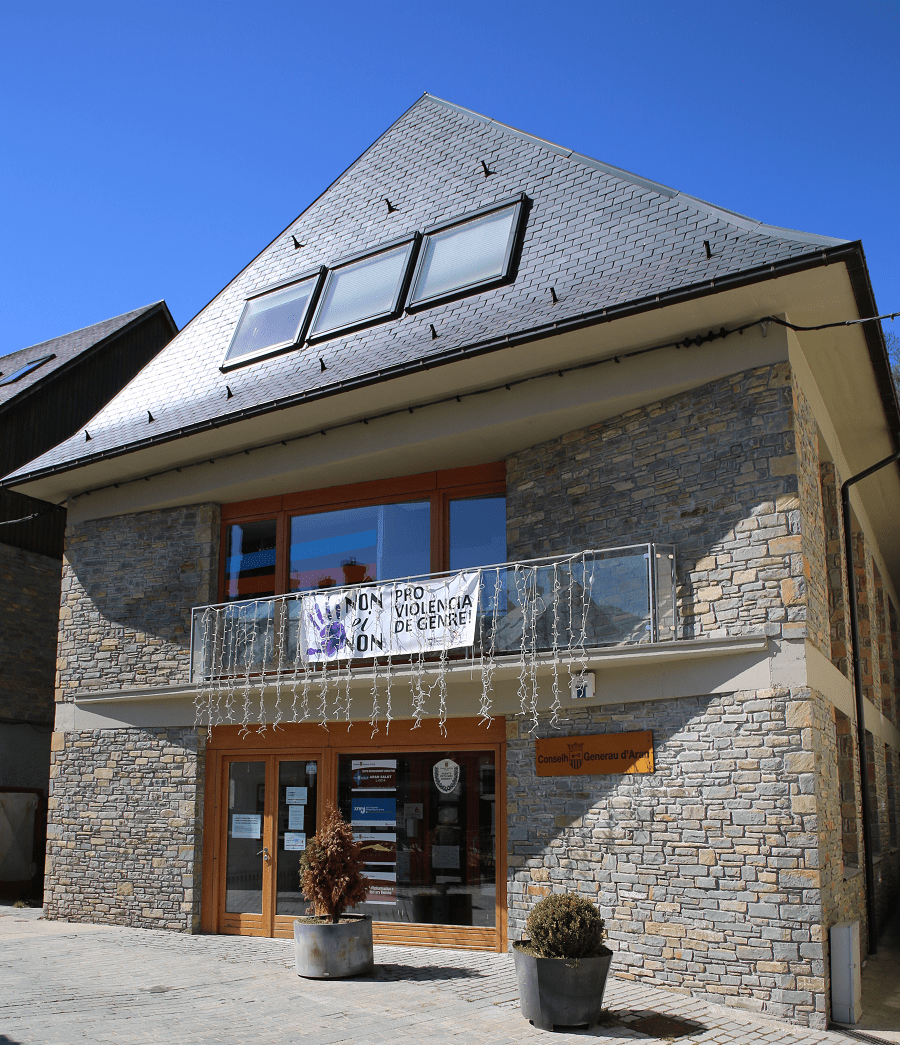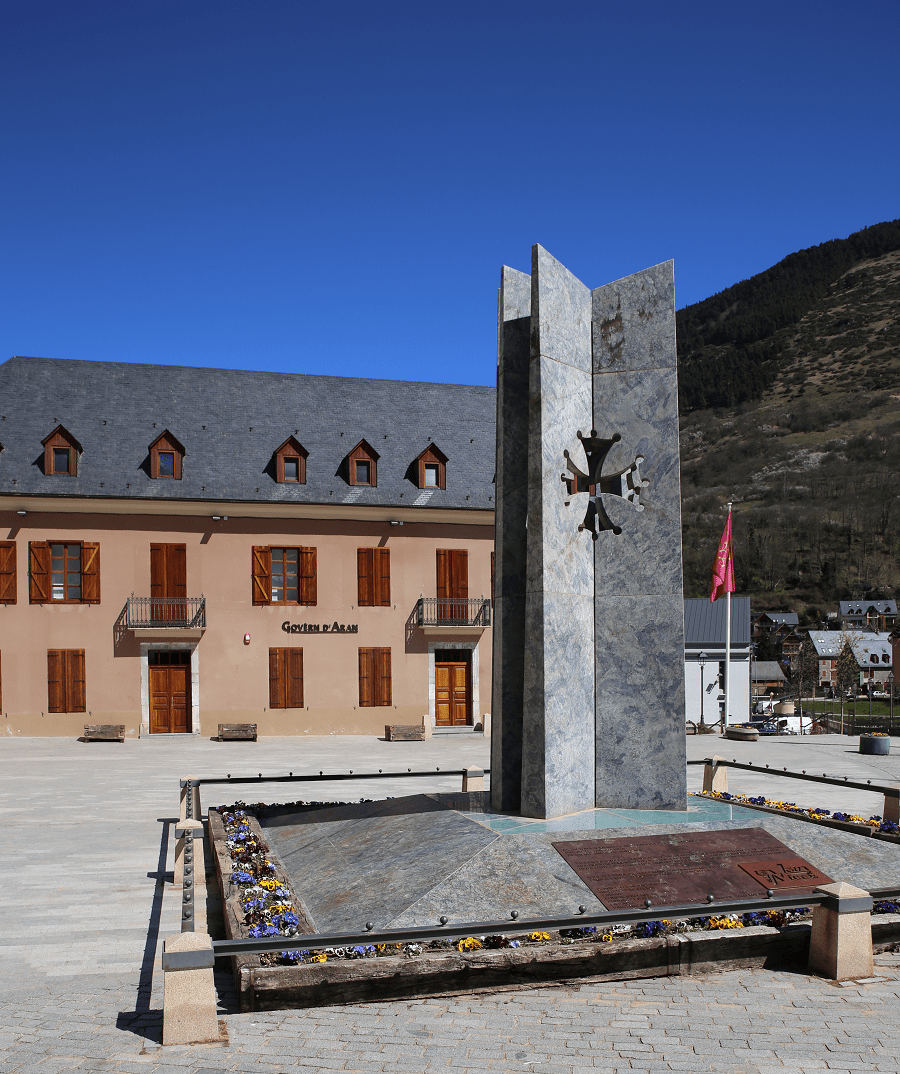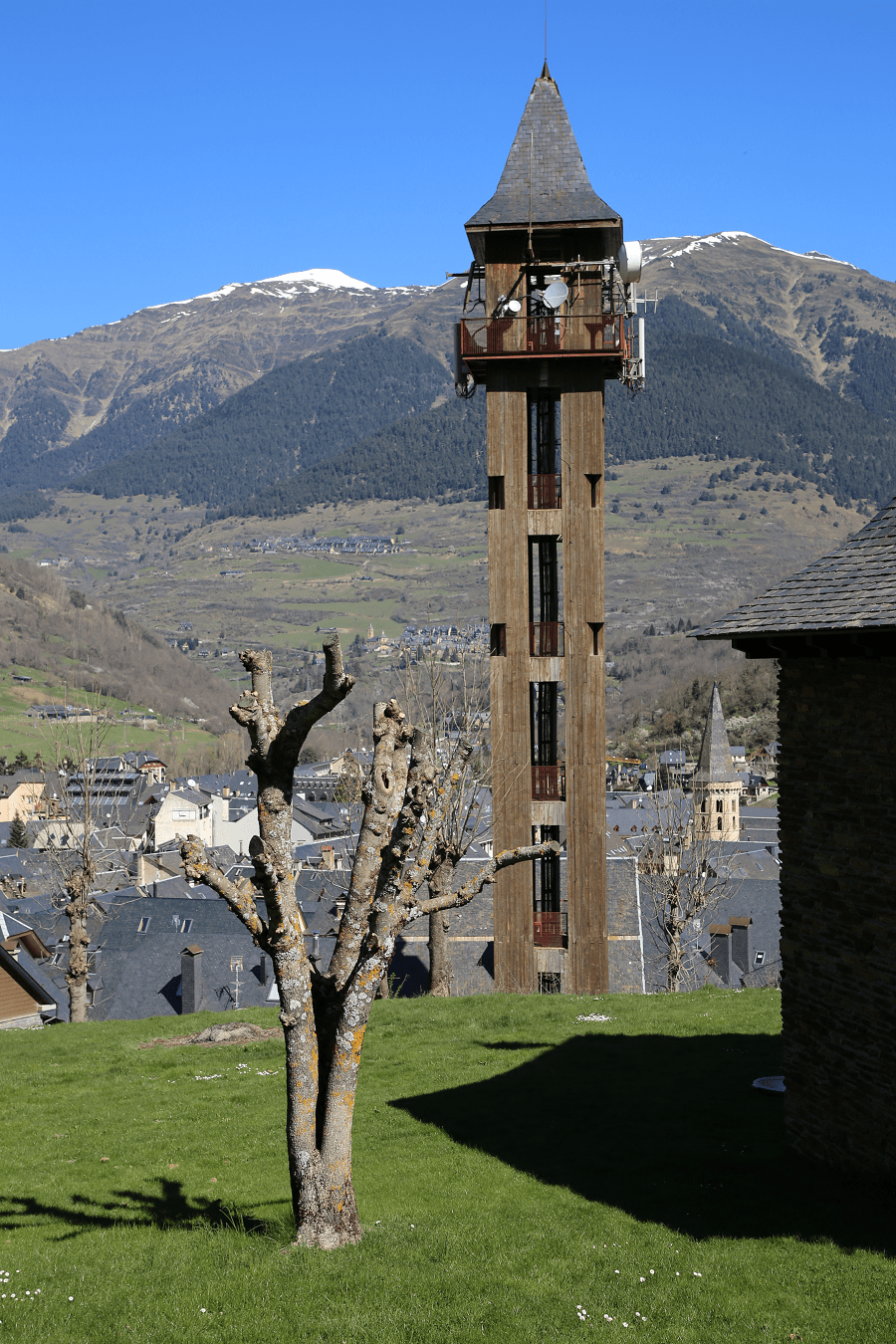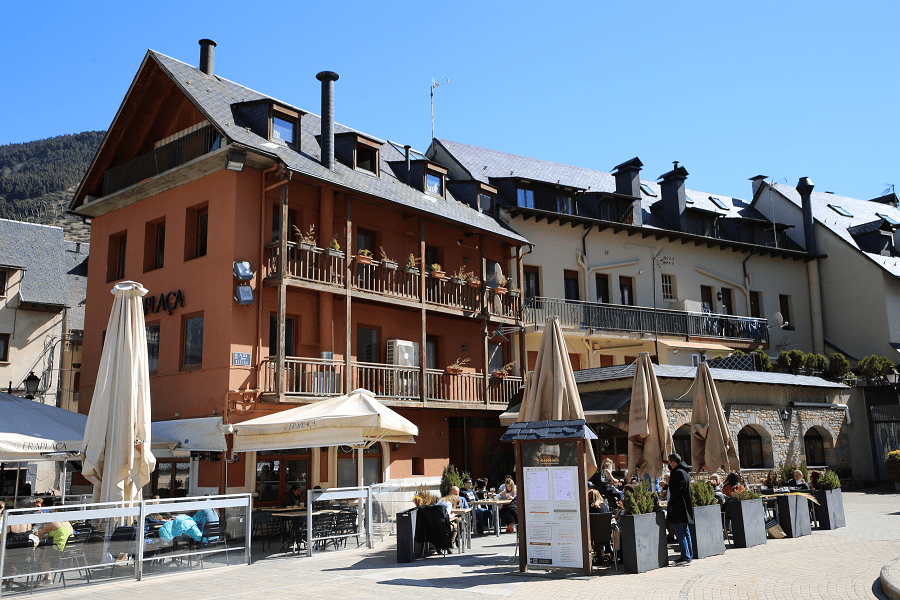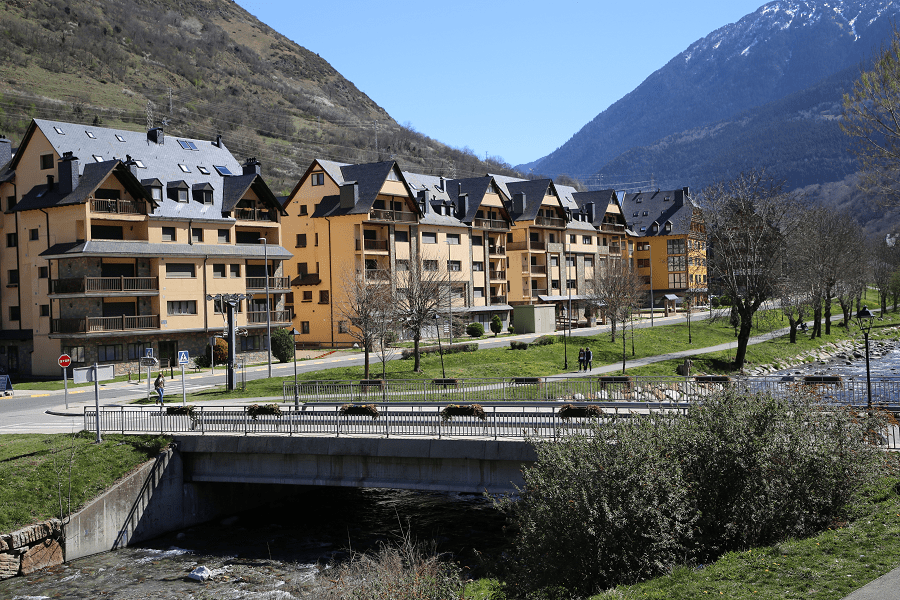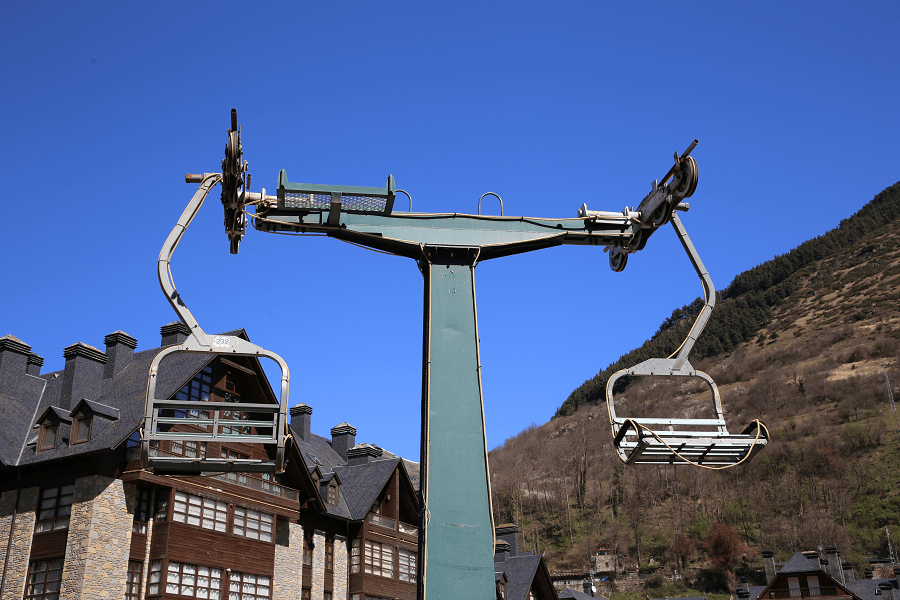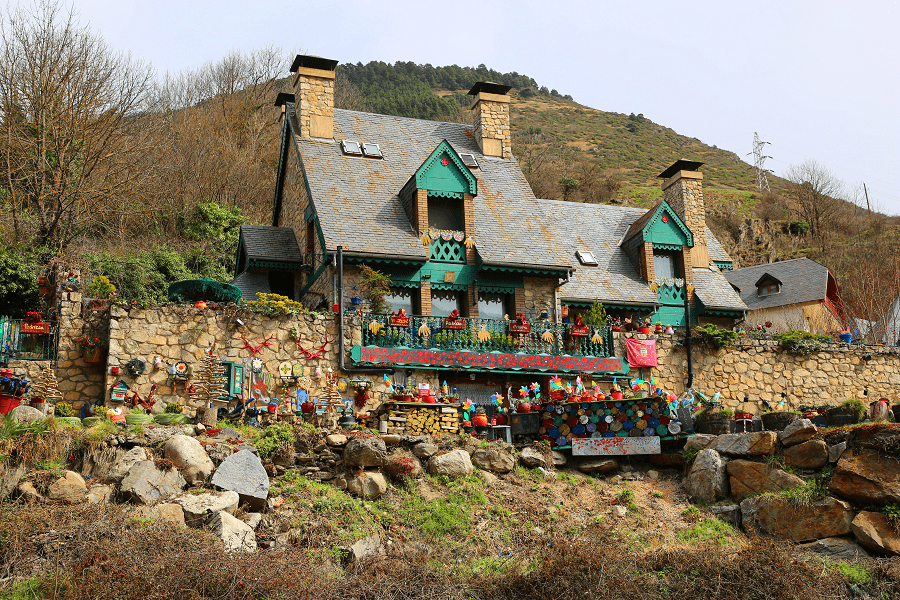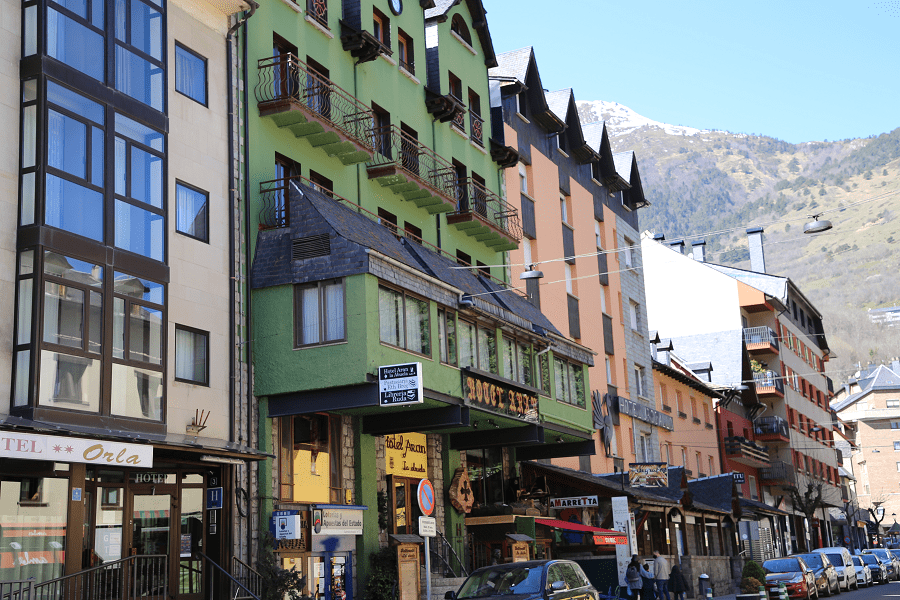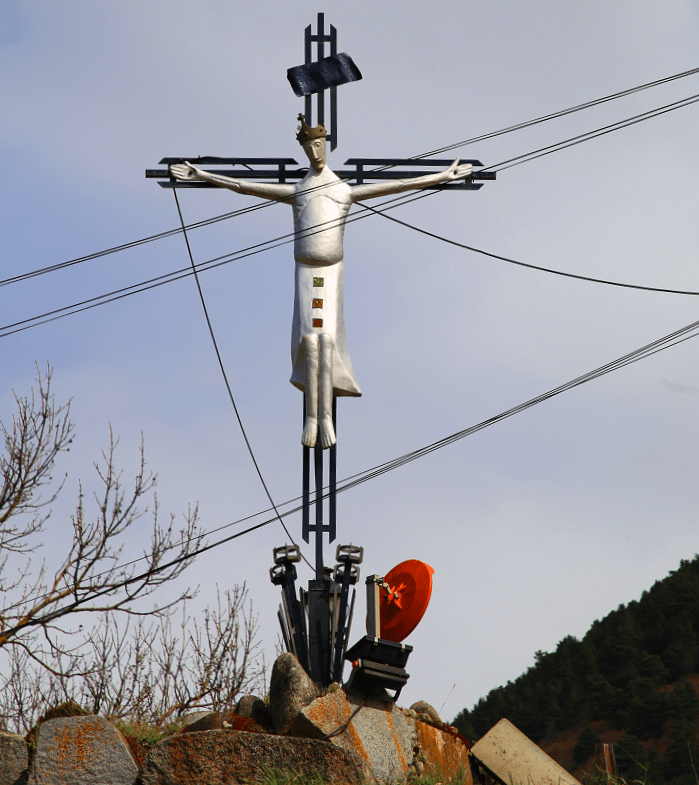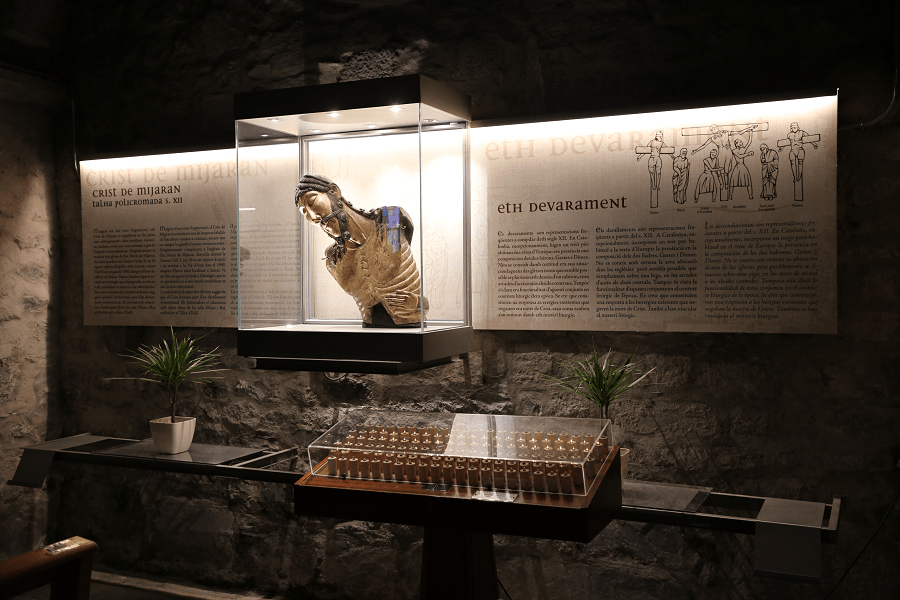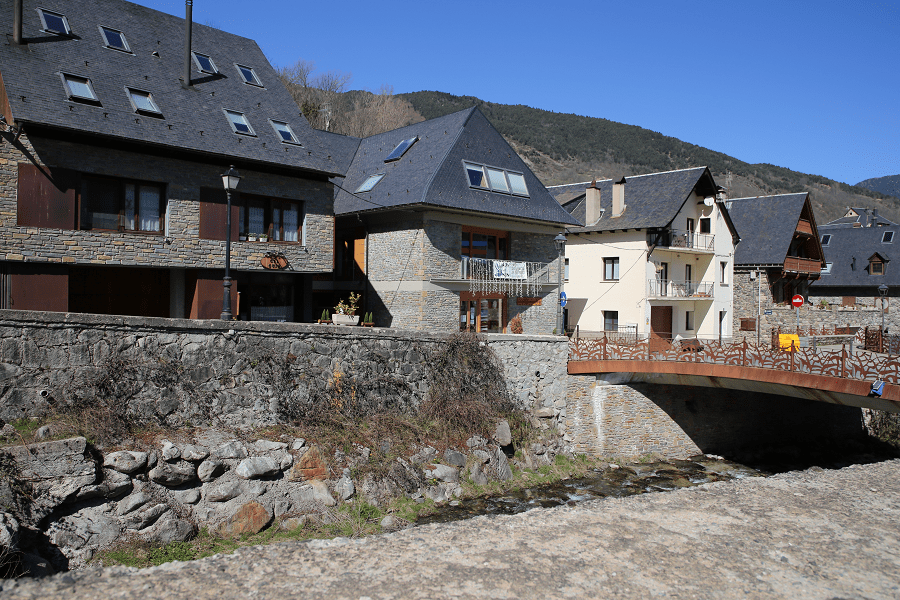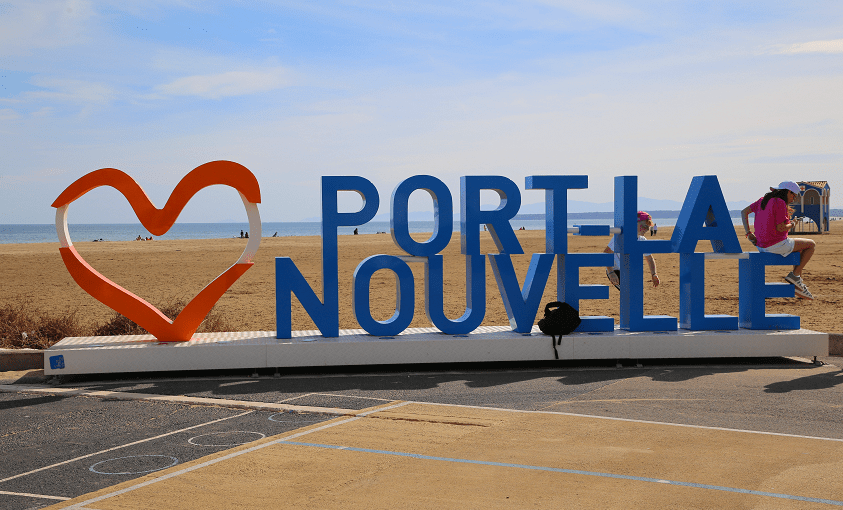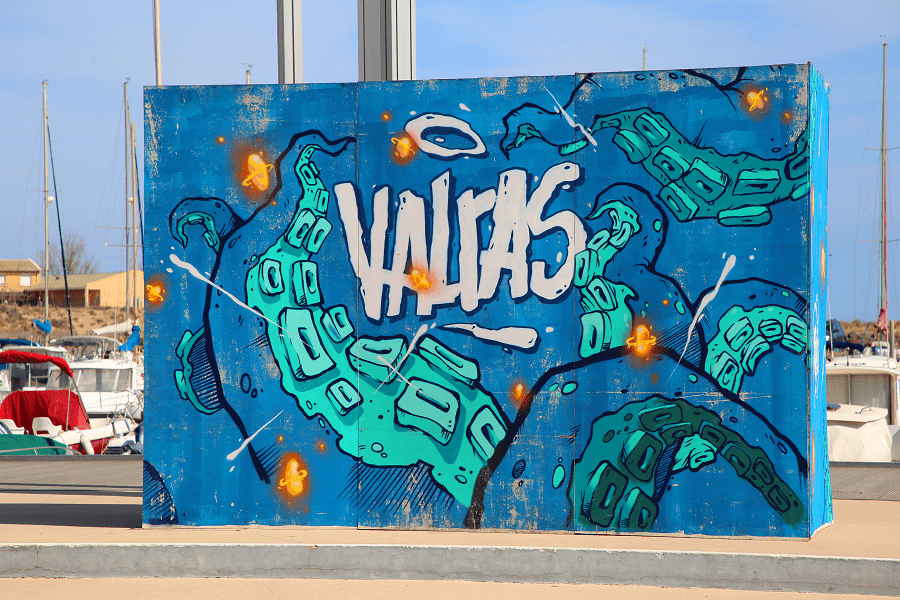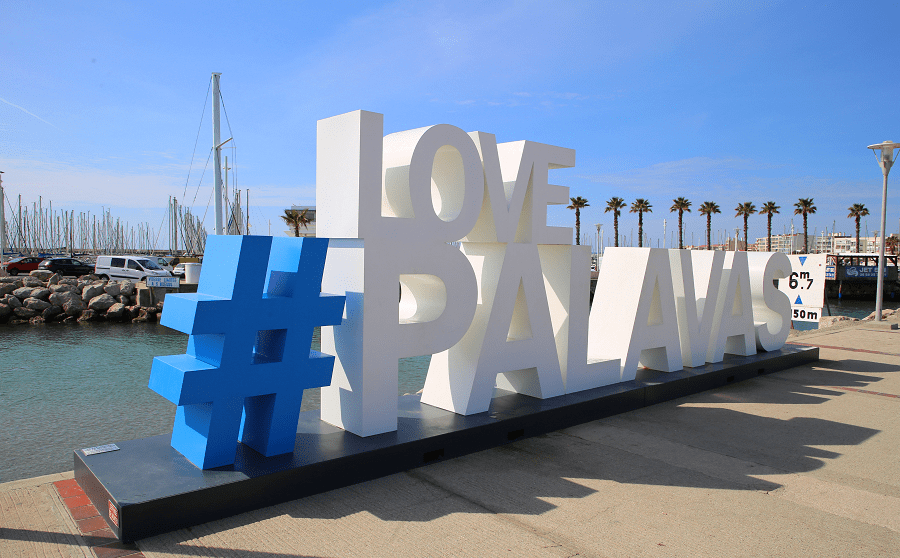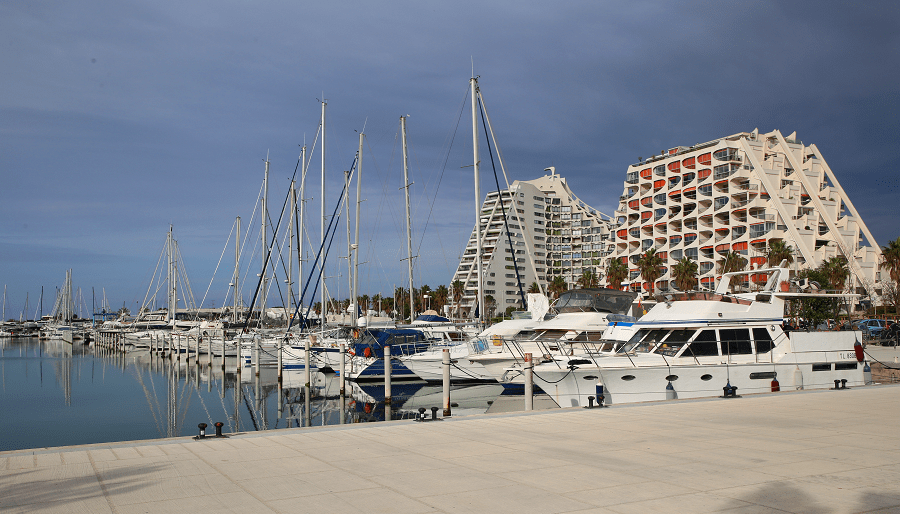Vielha e Mijaran, or Vielha, (traditional Catalan name: Viella i Mitjaran; until 1984 Viella – Mitg-Aran) is a municipality in the Aran Valley (Spain), formed in 1970 with the annexation of six Aranese municipalities with Viella. The latter is the Aranese capital, head of the municipality, the Valley and its judicial party. Located in the Lleida province, Catalonia.
It is a first-class tourist center, thanks to the natural environment of the entire Aran Valley and its location close to the ski resorts (for example Baqueira-Beret, which is the largest and one of the most visited winter resorts in Spain). It’s also one of the best central parts of the Pyrenees to start exploring these mountains.
The intense nature of the Valley, with deciduous and coniferous forests alternating with alpine and subalpine meadows and beautiful fluvial stretches or lakes, can be found on every step taken and simply by opening the door where the visitor is staying. The course of the Garonne River is the essential structure of the main valley and its tributaries provide not only its waters, but also other side valleys that justify its name: Val d’Aran (Valley of Valleys).
The Val d’Aran MTB center offers certified and accessible routes for all levels, along over 400 km of marked trails, both for those who want to enjoy direct contact with nature and the rich heritage of Aran and for the most demanding technical itineraries, long descents and steep slopes.
Location
The municipality limits to the north with that of Canejan, to the northeast and east with Alto Arán, to the south with Vilaller, to the west with France (department of Haute-Garonne, Occitania) and with the municipality of Las Bordas, to the northwest with the municipalities de Vilamos and Les.
Economy
It is the tourist, commercial and service center of the valley, with a wide range of restaurants, shops and accommodation, including the Parador de Turismo de Viella, opened in 1967. In terms of sports, the palace of ice and adventure sports that can be done there, skiing and any activity related to high mountain tourism.
The hydroelectric plant, opened in 1947, uses water from the Garonne River.
Agriculture has some irrigated and dry meadows. There is bovine, ovine and equine livestock, but the amount of cattle has decreased considerably. Traditionally, three livestock fairs have been held, but currently only the one on October 8 is preserved, in addition to the weekly market. The drapery industry, traditional in the Aran Valley, is no longer preserved; linen and hemp fabric was made. The two sawmills have also disappeared.
In 1985, a new, larger hospital with a helicopter runway was opened.
Main attractions
In Viella:
- Church of Sant Miquèu, with Romanesque and Gothic elements (the portal), houses the Christ of Mijaran, a Romanesque carving considered the main sculptural exhibition in Aran.
- The Museum of the Val d’Aran, installed in the Tor deth Generau Martinhon, a manor house of the seventeenth century that exhibits various aspects and elements of geology, vegetation, fauna, climatology, history, archeology, art, language and ethnology of the valley.
- Several houses and palaces in the old part of the town, to the right of the river Nere, such as Çò de Rodés, Çò de Fedusa or Çò de Burgaròl.
- La Fabrica dera Lan, a 19th century building dedicated to showcasing the ancient wool industry.
- The Parador de Turismo, on top of the hill of Eth Castèth, built in 1966.
- The Palai de Gèu (Ice Palace), a modern sports center and ice rink, built in 1994 and inaugurated by the former President of the Generalitat Jordi Pujol.
- Remains of the church of Santa Maria de Mijaran.
In other towns:
- Church of Sant Esteve de Betren, Romanesque and Gothic style, considered one of the most beautiful examples of Aran.
- Church of Sant Martí de Gausac, Gothic style.
- Romanesque church of Sant Pere d’Escunhau, from the 12th century.
- In Escunhau we can also find old noble houses, some with 15th century windows; the one in Perejoan dates from 1393.
Festivals and local holidays
- Aubert: November 11th
- Betlan: August 5th
- Betren: October 7
- Casarilh: December 21st
- Escunhau: June 29th
- Gausac: 17 August
- Mount: August 10th
- Montcorbau: 3 August
- Viella: September 8 and October 8
- Villa: August 17th
- Vilac: August 1st
Other parties and celebrations
- Carnival of Viella (February)
- Hesta d’Aran: National Day of the Val d’Aran (June 17th)
- Saint John (June 23d)
- Crafts fair in the Val d’Aran and the Pyrenees: 15th and 16th July
- Viella festival (from 6 to 11th September)
- Cattle fair: commercial and livestock (October 8th)
- Antic Viella: fair of antiques, flea markets and collecting of Vielha-Mijaran (from December 28 to January 4)
Shopping
The route of the Aran stores depends on three main areas: Vielha, Bossòst and Les, but should not forget the vintage shops that have survived in each of the picturesque villages. Some of them, roadside, flaunt their affability for the traveller. Other, more hidden, can be found between the streets under roofs of stone and wood.
Restaurants
There are three Michelin stars restaurants in Viella:
- Era Coquèla, Avenida Garona 29, 20 – 46 EUR • Modern Cuisine, Creative
- Eth Bistro, Paseo de la Libertat 18, 45 – 95 EUR • Market Cuisine
- Era Lucana, Avenida Alcalde Calbetó 10, 17 – 50 EUR • Traditional Cuisine
How to get to?
It takes about two hours to get to Viella from the international airport of Lleida.
The N-230 road from Lleida passes through Eth Pònt de Rei, on the French border, through the Viella tunnel, and the C-28 road exits, which connects the valley with the Pallars Sobirà through Salardú and the Port of Bonaigua.
From Barcelona: 3 hr 57 min (316 km) via N-230 and A-2
From Madrid: 6 hr 21 min (576 km) via A-2
From Paris: 8 hr 35 min (836 km) via A20
From Andorra: 2 hr 34 min (143 km) via Eix Pirinenc/N-260 and C-28
From Monaco: 7 hr 35 min (739 km) via A8
From Moscow: 38 hr (3,612 km) via E30/M1
From Belgrade: 20 hr 34 min (2,042 km) via E70
From Istanbul: 30 hr (2,991 km) via E70
From Bern: 9 hr 39 min (997 km) via A9
Main information
Area: 211 sq. km
Coordinates: 42° 44′ 06″ N, 0° 47′ 43″ E
Population: 5.611
Languages: Spanish, Catalan
Altitude: 974 m
Currency: euro
Visa: Schengen
Time: Central European UTC +1
See here Pyrenees travel guide
See here France travel guide
See here Spain travel guide



